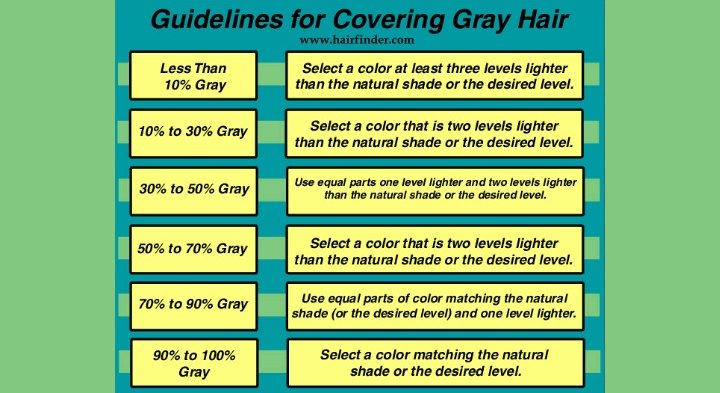Cover Gray Hair with Hair Color

Was my grandmother right when she said that pulling out gray hair would make three more grow in its place, because it sure seems that way? What about using hair color to cover these grays? Will a hair color that matches my natural shade cover the gray or should I go a little darker?
Hair color can be an effective way to hide gray hair, but you should always remember that to cover your gray hair and achieve a natural look, you want to use a color that is lighter than your hair's natural color level. If you do what you suggest in your question and use a color darker than your natural color, you're going to end up with a dark, uniform color that looks completely artificial.

Our hair's natural color looks natural because the color actually varies a little with each strand. When we cover gray hair, we want to add a color that is going to 'dim' the brightness of the gray or make it appear to be simply a natural "highlight". If your hair is naturally a dark color, choose a light shade with a similar base color to cover the gray.
Remember, that when you use hair color in something other than a targeted process (like highlighting with a cap or foils) you are adding color to all of the hair, and adding pigment to already pigmented hair will make that hair darker. Therefore, a lighter shade is always better for covering gray.
A good rule of thumb to follow is this: when trying to cover a minimal amount of gray hair (less than 10% gray) use a color that is at least three levels lighter than your natural color. You'll also want to note that gray hair is often resistant to color, so you may want to do a color test to see if it will take. If needed, there are hair color formulas specifically designed for gray coverage, and additives available for regular color formulations to help it penetrate the gray hair.
I am referring to the use of deposit only hair color in the covering of gray hair. Using a hair color formula that has any lifting action will result in a lightening of the pigmented hair, in addition to darkening the un-pigmented hair.
©hairfinder.com
